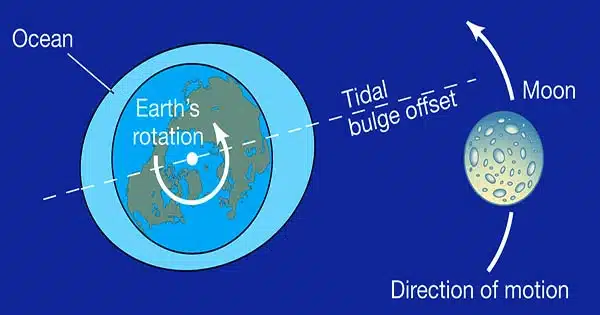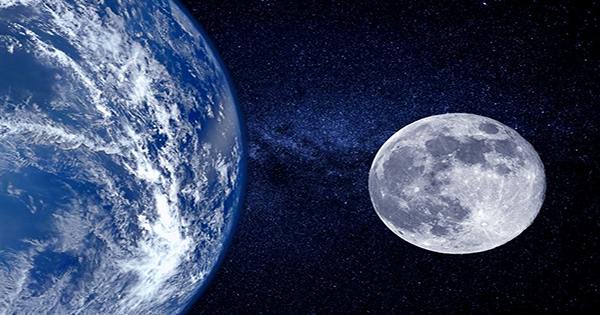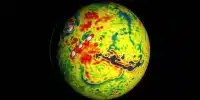Scientists have found that as the moon progressively moves away, Earth’s days are growing longer.
The sole natural satellite of the Earth has always been thought to orbit at a fixed distance from the planet owing to gravitational force. NASA claims that scientists no longer hold this belief, nevertheless.
It appears that the bond between the Earth and the moon is eroding. Our globe now spins more slowly and takes a bit longer to complete a full day’s rotation as a result of this progressive collapse.
The celestial body used to be far closer to the Earth, according to a recent study by academics. They’ve found that the Earth’s days get shorter as the moon gets closer.
Scientists once believed that a day on Earth 1.4 billion years ago only had 18 hours. Compared to the 24 hours we’re used to in the 21st century, this is significantly less time.

According to Professor Stephen Meyers of the University of Wisconsin-Madison, “As the moon moves away, the Earth is like a spinning figure skater who slows down as they stretch their arms out.”
One of our goals was to create extremely old geological time scales using Astrochronology in order to tell the time in the farthest past. It is our goal to be able to analyze ancient rocks in a manner like to how we research contemporary geologic processes.
Astrochronology is the study of the relationship between astronomical theory and geological observation. Professor Meyers, the study’s co-author, collaborated with his team to reconstruct what he believes the solar system looked like in the past.
Professor Meyers examined sediments from a rock formation that is 90 million years old last year. The scientists purportedly made this discovery on the Earth’s climatic cycles.
According to the results, the moon is now moving away from the Earth at a pace of 1.5 inches (3.82 centimeters) every year. Therefore, days on Earth will lengthen as the moon moves.
The moon would have previously been so near to the Earth that gravitational interactions would have torn it apart, according to scientists.
It was exhilarating because, in a way, you dream of this all the time; I was a solution-seeking for a problem, according to Professor Alberto Malinvero, co-author of the paper.
It is crucial to remember, though, that researchers have determined that the moon is 4.5 billion years old. As a result, their computations might not be entirely correct. However, it is certain that the length of Earthly days is increasing.
















